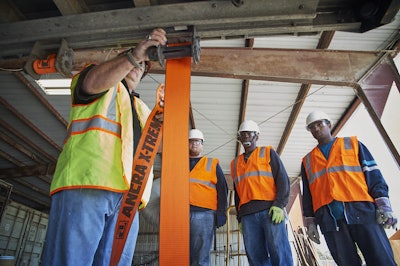

A new research report by Stay Metrics, a provider of driver retention tools, details findings from surveys to drivers about the orientation process.
Recent results from driver surveys the company administers for clients during critical periods of early employment show that about 25% of drivers are not learning what they expected to from their carriers during orientation.
Analysis of recent survey data and interviews with carriers support the report’s thesis that new technology, consistent messaging, personalized training, and putting the right people in front of drivers produce better results in orientation that contribute to higher job satisfaction.
Technology
To maximize drivers’ attention and interest in orientation, the report recommends carriers use interactive learning technologies such as the Luma DRIVE FIRST platform. Interviews with expedite hauler Premium Transportation Logistics found the platform increased driver engagement while compressing its orientation program from three days to one. Likewise, the interactive, game-like learning platform helped flatbed carrier Fraley & Schilling reduce orientation by one full week and created individualized learning experiences for drivers.
Consistent messaging
The report offers several recommendations for carriers to improve messaging to get drivers all the information in orientation they need to succeed. According to a recent run of surveys, a significant percentage of drivers said their early job experiences did not match the messaging they received in orientation. The areas with the most inconsistency are home time (29%), pay/settlement (36.3%), and runs/ routes (38.2%).
Personalized training
One of the quickest ways to lower a person’s engagement in orientation is to cover something they already understand well, as if it is new to them. In the report, Matthew Kowalczyk, supervisor of safety and training at Load One, shares how he tailors his orientation to drivers based on their past safety records. The report also details strategies for carriers to accommodate the unique learning needs and preferences of drivers.
Putting the right people in front
The report shares strategies for building personal connections in orientation. At a minimum, drivers should be meeting with someone from senior leadership, and from the payroll, operations and safety departments.
“We want to share this report, free of charge, for management teams at carriers to determine which areas they are doing well on and which areas they want to focus on in 2020 for improvement,” said Tim Hindes, CEO and co-founder of Stay Metrics. “We are confident that those who have the right tools, the right message, and the right people in the room for orientation will see immediate results.”












